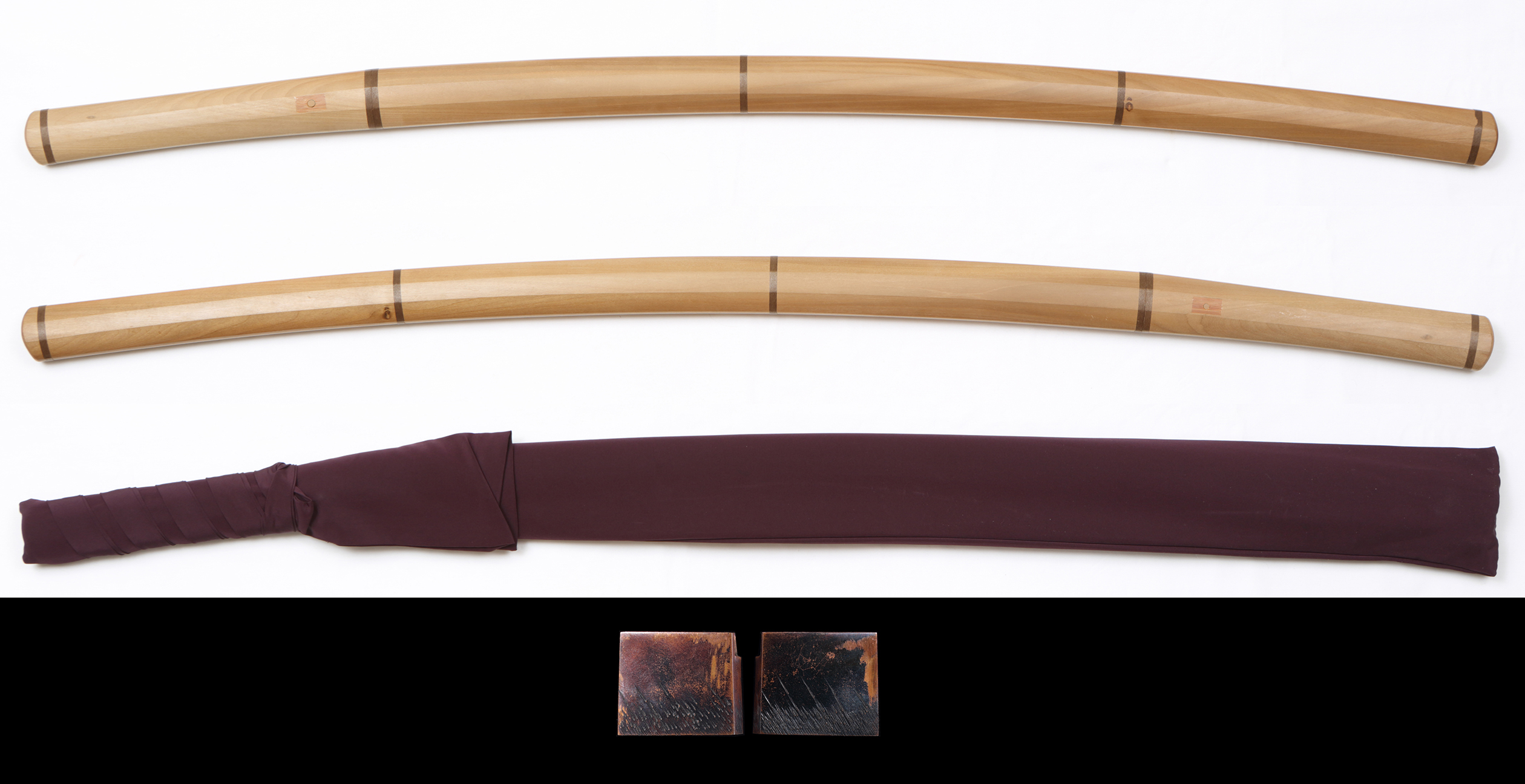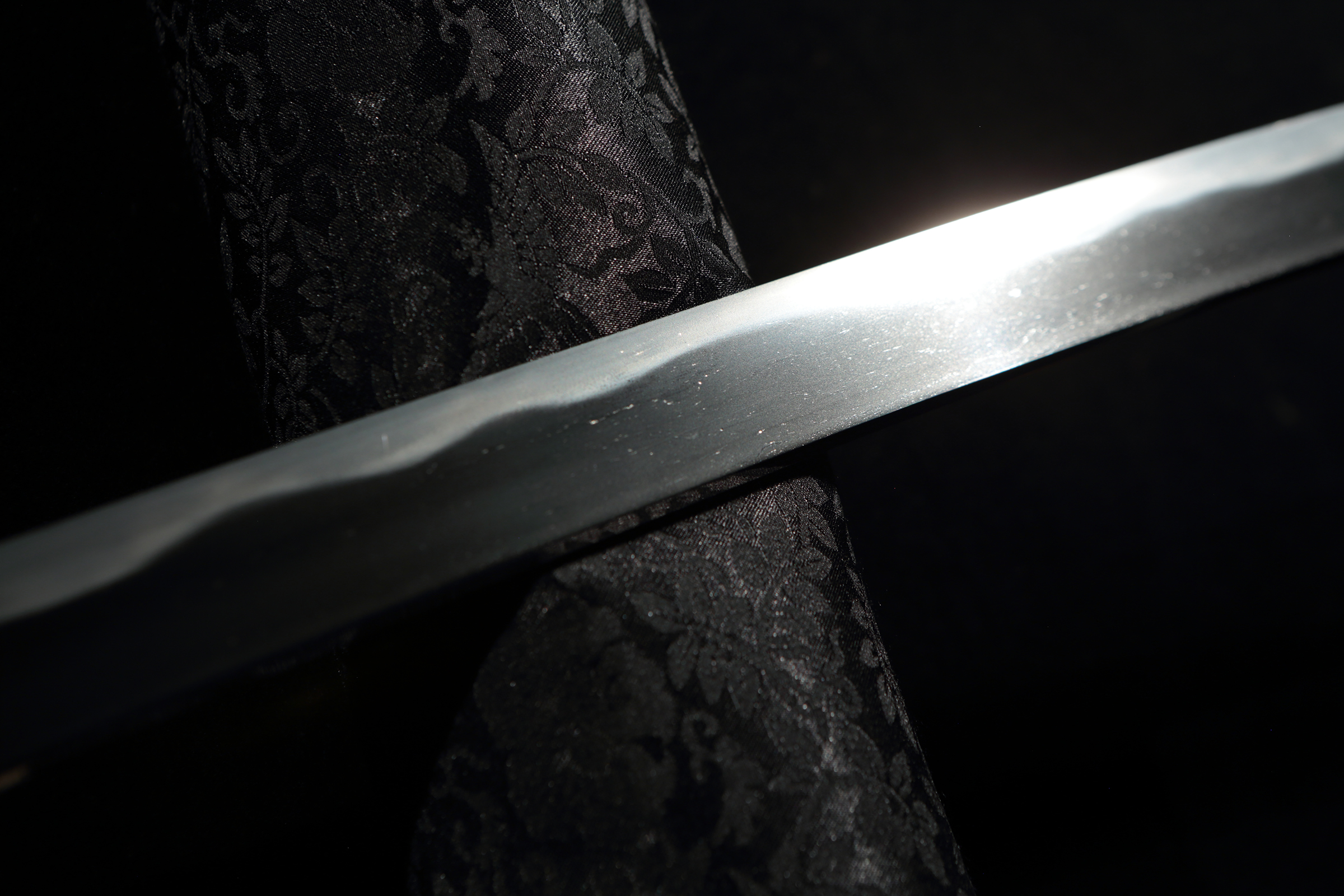

|
Katana, Shirasaya
|
Mumei, attributed to Shinshinto Kaifu
|
[ Signature ] omote : no signature ura : -
|
[ Size ] Blade length 72.8cm (2 shaku 4 sun 0 bu 2 rin), sori 1.9cm (6 bu 2 rin), moto-haba 3.01cm, moto-kasane 0.63cm, mekugi-ana(hole) 1, blade weight 562g , shirasaya length 99cm
|
[ Period ] Edo "江戸", second half of |
[ Province ] Awa "阿波" |
 |
[ Feature ]
Form : O-hira-zukuri. Iori-mune. Mihaba is wide. Kasane is ordinal. Moderate sori attached. Saki-haba does not become so narrow. Fukura attached form.
Nakago : Ubu. Yasurimes are kiri. Saki is iri-yama-gata. One hole.
Engraving : (omote) Devanagari ; Sanskrit characters, goma-bashi "護摩箸", a lotus pedestal "蓮台". (ura) : su-ken "素剣" and tsume "爪”.
Jigane : Itame-hada with some changes. Jinie attached. Shirake-utsuri come to be appeared.
Hamon : In ko-notare, gunomes mixed. Nie attached well. Kin-sens and sunagashis appeared.
Boushi : Round. It turns long with attached nie.
[ Highlight ]
It is small in numbers in o-hira-zukuri form. It makes fine balance among form, length, weight and sori by careful condieration. Funa-zoko shape nakago form was has been modifed later on purpose of So-shu-den style. Engravings as well. However, well maintained fukura called Kaifu-kissaki shows the specific characteristic of Kaifu school. Kaifu swordsmiths lived in Kaifu-go, Kaifu county, Awa province. It started end of Nan-boku cho or beginning of Muromachi period. They continued till end of Edo period, Shin-shin-to era. This sword was created by Kaifu school during Shin-shin-to era.
[ Conditions ]
There is tiny scratch. There are small rusts on ha-machi and 5cm above ha-machi, on mune. However, it does not prevent appreciation. It can be preserved in current conditions.
|
[ Attachments ]
Habaki(suaka-ji, single), shirasaya, bag of shirasaya and NBTHK hozon paper "保存刀剣鑑定書"( issued on 27th Jan. Heisei 24(2012)) |
|
[ Item number ] A080320 [ Price ] SOLD |




